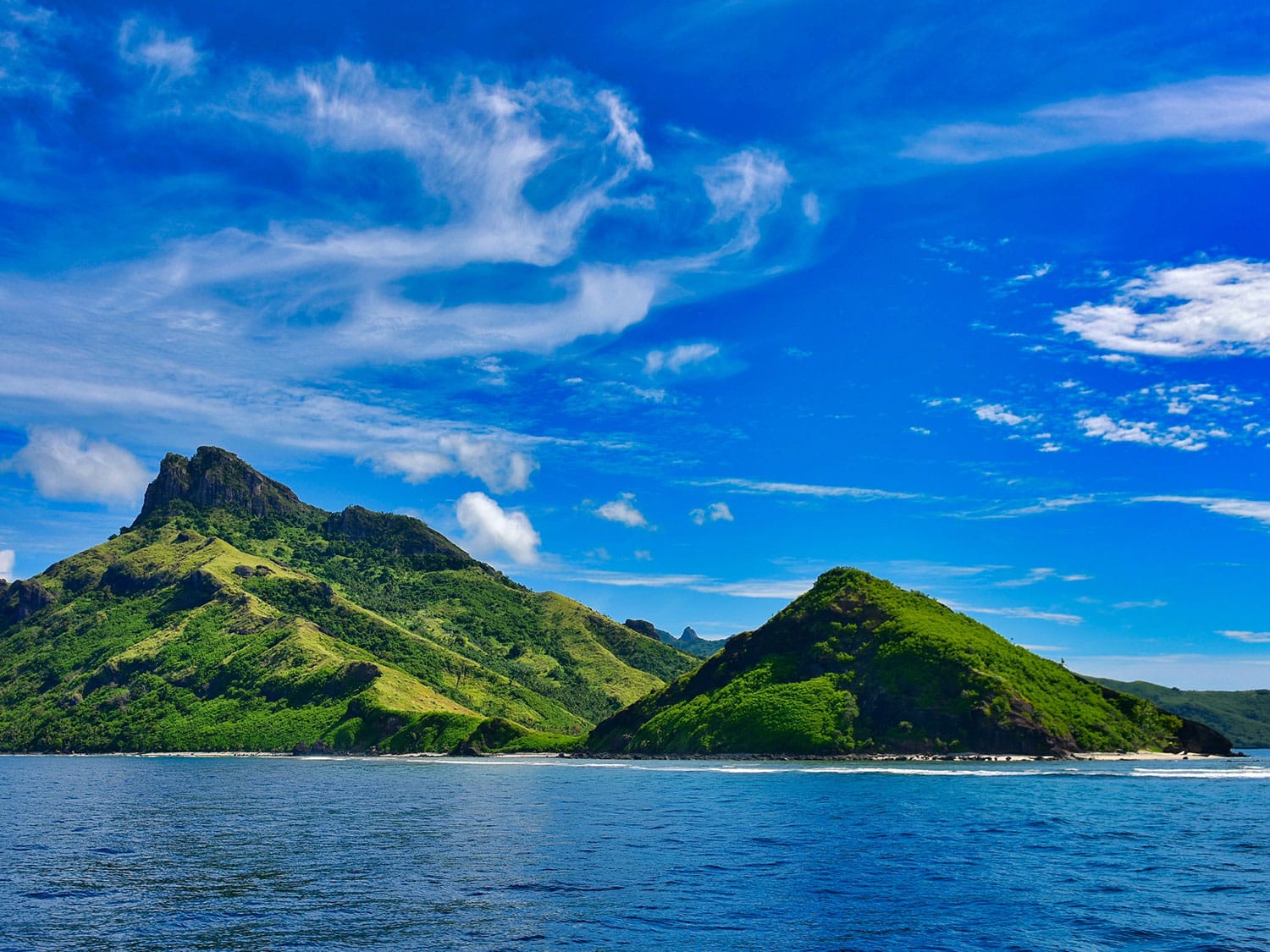How To Experience A Different Kind Of Fiji
When your budget is modest but your desire to travel is still unlimited, there are creative ways to visit paradise and live like a local.
When we decided to take a three-month sabbatical from the Northern Hemisphere, it was mostly to escape the Sierra Nevada between November and March. We love our mountain home, but the winters have become more difficult for our AARP bodies to handle. The other reason was, believe it or not, I had never been to the Southern Hemisphere.
My second and final husband has been hellbent on taking me to all the locations on my travel bucket list, including but not limited to Australia, New Zealand, Fiji, and French Polynesia. For decades I've carried around torn-out magazine pages from various island travel publications depicting heavenly South Pacific beaches. The photos are faded and worn, having endured dozens of thumb tack holes and folded paper seams from being carried along with me from house to house, office to office. Pictorials of white, micro-sand beaches and ocean blues in a myriad of shades so clear and inviting that I often fantasized of doing a Mary Poppins, jumping into the photographs and leaving behind my responsibility-ridden life.
Another hurdle was the small issue of finances. Not everyone can afford to stay at Fijian luxury resorts such as the Vatuvara Private Island, the Wakaya Club and Spa, or the Jean Michel Cousteau Fiji. Add in the flight cost and someone on a fixed income can kiss their island-hopping, Fijian dreams goodbye.
Enter Home Exchange, an organization that's been around since the 1990s, paralleling the rise of the Internet. In 2006, the Cameron Diaz and Kate Winslet movie The Holiday was released and the concept of swapping homes with another family for a vacation exploded. Home Exchange can offer even the most spendthrift traveler the chance of a lifetime—to stay in paradise virtually for free. That's how we were able to stay in Fiji for almost a month.
Although we may have enjoyed staying at a famous Fijian resort like the ones you see in brochures and on the Travel Channel, we don't travel that way. Dipping our toes into the local culture while living with the locals is our cup of tea. If we want to be snowless for three months, this is the way to go. It fit nicely within our budget which meant aside from bus fares, airfare, food and a few out-of-pocket excursion treats, our 25-day stay in Fiji was basically free.
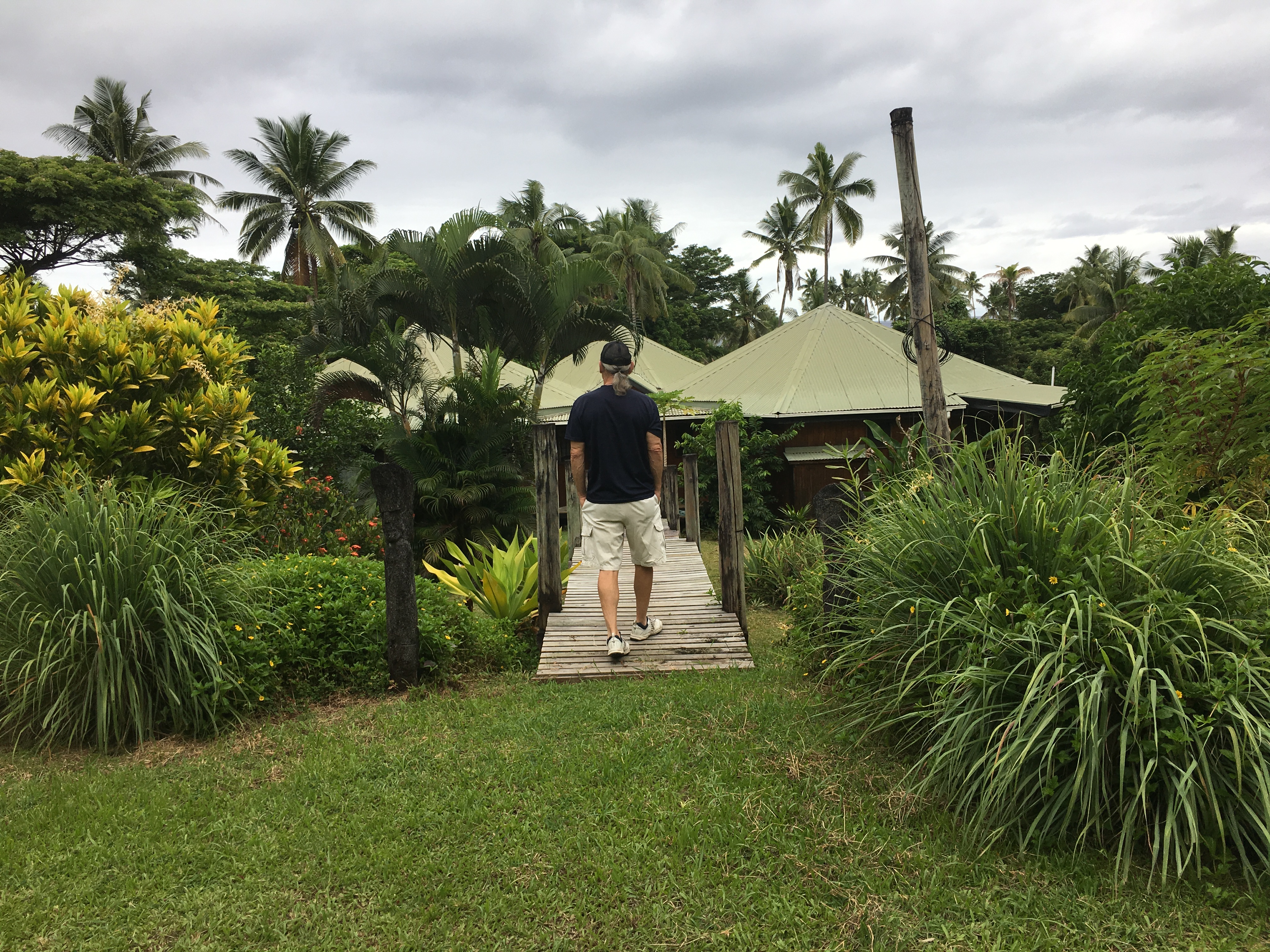
After spending a few weeks in New Zealand, we had an overnight on the island of Vita Levu, beginning our Fiji excursion in Nadi (pronounced 'Nandi'). Via taxi, we were dropped off at the Bamboo Backpackers accommodations, a mere 30-minute ride from the airport. Minutes after we brought our luggage into the room, I raced down to the beach. Sunset was in full bloom and I did the happy-go-lucky jig of a woman in her 50s who had finally put her toes into Fijian sand.
Moments later, I was horrified when I noticed something resembling a head bobbing in the water close to shore. I had heard that in the not-so-distant-past the Fijian culture included cannibalism. It wasn't out of the ordinary for a head to come ashore. I stepped closer and discovered it was not the head of a decapitated enemy of the Fijian people, but rather a coconut which must have somehow escaped death by machete. Or just fell off a nearby tree. Coconuts. I was in the land of coconuts. Lots and lots of coconuts.
Bamboo Backpackers is owned by New Zealander Richard Heatherly, who also owns the Maravu Backpackers Resort on Taveuni, Fiji's third largest island. The Bamboo is a gathering place for the young and old alike who either travel on a budget or aren't into the sparkle and splash of the more expensive resorts. You can meet people from all over world and exchange stories of where they've been or where they are headed. Tips on what to do locally are also offered just as generously. If you are expecting five-star service, however, this is not the place for you. Young travelers might share dorm rooms, but there are also simple, private rooms for those who can afford $125 Fijian Dollars (roughly 60/USD) a night. We opted for the private room which was clean and so close to the ocean that it was impossible to have a sand-free stay. Perfect.
The next morning, we flew to Vanua Levu, Fiji's second largest and lesser visited island in the northern division of the Fijian islands. Resort personnel did not greet us with traditional Fijian leis and kava drinks upon our arrival because we were not "resorting it" like many of our American compadres. Our Home Exchange abode, owned by New Zealander Kevin and his American-born wife Caroline, is a plantation on Nukubalavu Road, just outside of SavuSavu, one of the two major towns on the island.
We were met at the small airfield by the caretaker of the plantation, Sisi, and her brother-in-law. Or was he her cousin? To know anything about the history of Fijian families is to know that everyone is basically related to everyone else. If we had a quarter for every time we heard the phrase, "Oh, she/he is my cousin," we would have had enough to cover our airline ticket to Fiji and back.
They drove us five minutes down Nukubalavu Road to the plantation house, and the pictures on Home Exchange did not do it justice. It may not have had air conditioning, television, or Internet and Wi-Fi, but it was a gorgeous Fijian home, spread over five acres where we received fresh papaya, guava, passion fruit, lemons, and avocado every day from the caretakers. After we dropped off our luggage at the home, we were driven into the town of SavuSavu so we could shop at the local market, the only business open on a Sunday, which is truly a day of rest in Fiji. Even the buses take time off.
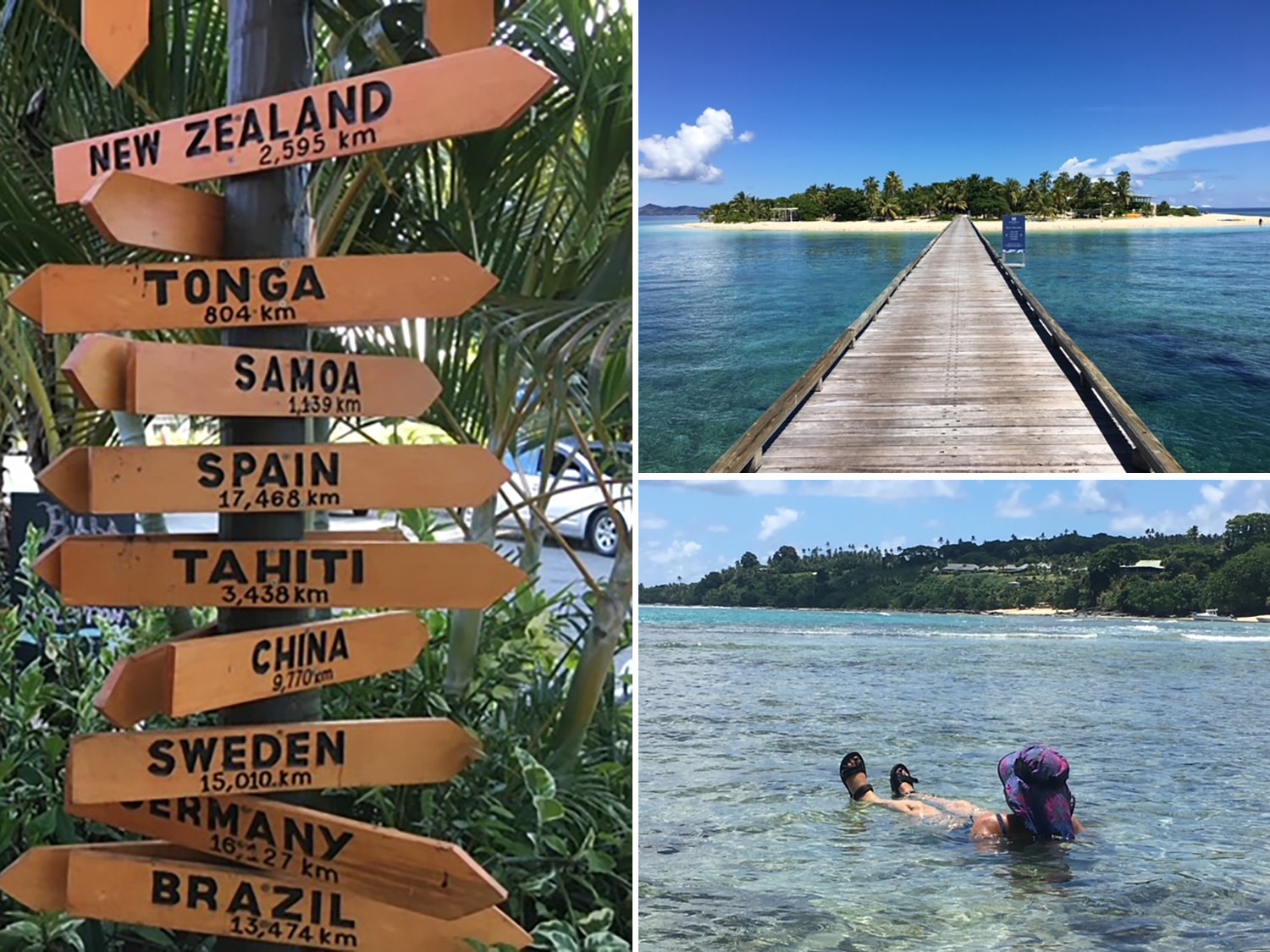
The next few days were spent getting down the lay of the land, bus schedules, and local customs. The Fijians are very respectful and a bit conservative in terms of proper attire. We were told that there is a time and place for the scantily-dressed and it isn't in SavuSavu or the villages that dot the island. "That is what the people who stay in resorts wear," said caretaker William Whippy, chuckling and shaking his head. He is a direct descendant of explorer David Whippy, who was almost dinner back in the 18th century because Fijians did not like the white explorers bringing guns and disease to their islands.
(The story goes that Whippy's ship had crashed on a Fijian reef and as his crew was systematically roasted for dinner, he hid in the rain forest. Under the canopy of thick, green island foliage, he made himself a small boat to leave the island, lest he become an appetizer. Recalling the story that had been passed down for generations, William said just as his six-times great grandfather was about to launch his boat and escape, he was captured. But just as his head was about to be bashed in, the son of the chief noticed that Whippy's boat was different than what the Fijians built. When asked, Whippy told them how his boat maneuvered, due to a jib sail rigging and that it was much more advanced than their customary single-sail, canoes. Whippy was immediately delivered to the chief of Fiji who asked Whippy if this boat could be made faster and stronger than the ones they already had. There was a war brewing, and the Chief of Fiji was determined to stop Tonga from taking over his people and lands. Fiji won the war because of the new boat design and Whippy became a hero, not an entree. He was able to pick four wives from the Fijian villages and became a legend to his people, including the dozens of children he spawned many generations ago.)
In Savusavu, there were no scantily-clad beach bodies strolling along the one main road. Nor were there the sparkling white beaches. Anywhere. The Fiji in the photographs I so carefully kept with me all those years was not the Fiji we were exploring. I never saw Fiji as an almost Third World country, but when you strip away the resorts and the tourists, Fiji is no different than any other country just trying to keep up with the rest of the world without an abundance of financial means to do so.
The infrastructure is substandard, and only recently did the Fijian government implement a ban on single-use plastic bags. Plastic is everywhere. And I mean everywhere. It's not like Bali or Indonesia where plastic and rubbish gather in piles along their once pristine beaches, but the Department of Environmental saw the damage plastic is doing to Fiji and banning plastic bags is way overdue. There is only one small landfill in Savusavu, so most locals burn their rubbish in piles. Smoke plumes saturate the island day and night. I was grateful I had my asthma meds close by.
In Savusavu there is an open-air market where you can buy a variety of island vegetables for the week. But don't expect to get your broccoli fix anytime soon. Fresh broccoli and cauliflower are a rare commodity and can cost up to $17/USD per kilogram.
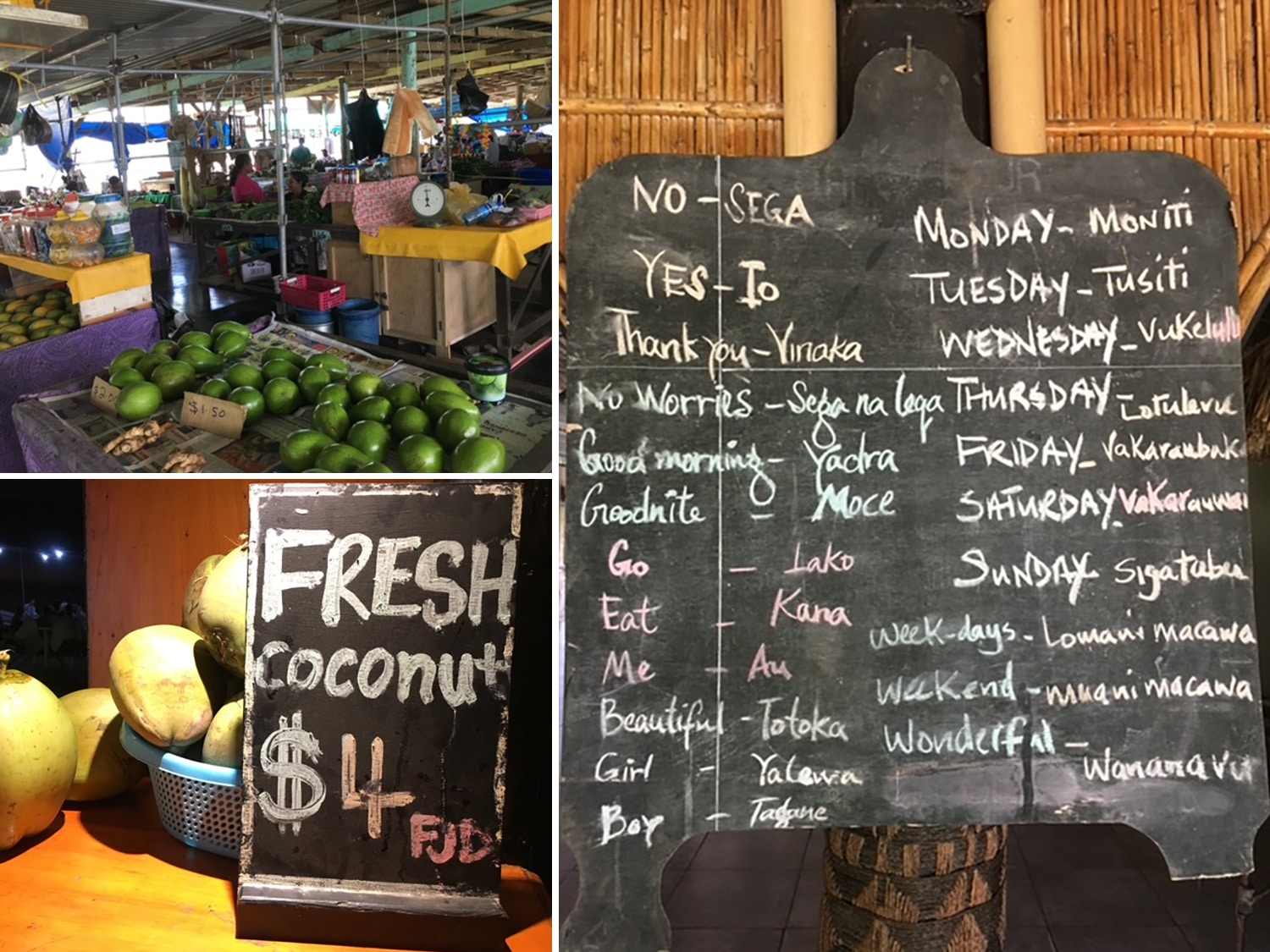
Also note that when standing in line, personal space isn't an issue for the locals. Meaning, they don't have any. I think the United States is one of the few countries where everyone literally needs their "space." In a Fijian pharmacy you won't find a sign telling you to stand 10 feet away from the pharmacist so he can privately help his clients. Everyone knows everyone else's business on the island and that's the way it's always been.
The day after we arrived, we went to town again and stood in line to get a bus pass. A local man wearing a pink shirt said, "Bula" to me (Fijian for "hello") then stood so close behind me that I felt his breath on my neck. I swear I could smell what he had for breakfast that morning and dinner the night before. But maybe I smelled, too. We knew it would be hot and humid because we were there during their summer and cyclone season, but I wasn't prepared for how hot it actually got in February. After a few days some of the locals who were getting used to seeing us around town laughed at how red and sweaty I would get while lamenting that there hadn't been a breeze for hours, days even.
Additionally, there didn't seem to be anyone making sure the public toilets were clean. Absent is the smell of bleach or a cleanser with the scrubbing bubbles. Toilet paper in public toilets is also a rare commodity. We learned quickly to always carry some with us. And the soap in that sink that used to be white? Be grateful if there is a sink and that the faucet doesn't come apart when you try to turn on the water. Better yet, along with your own stash of toilet paper, carry some anti-bacterial wipes in your daypack. Living like the locals is wonderful but being OCD about clean bathrooms twizzed me out a few times. I did manage to find a clean bathroom in town at a place along the water called the Captain's Table. It's where yacht owners hang out between April and October, Fiji's autumn and winter, when the humidity and heat are tempered.
A few days after our arrival—and thanks to the caretakers of the plantation—we had been accepted into the local Nukubalavu Village by bringing the head man some kava root from the open vegetable market and participating in their welcome ceremony. The Nukubalavu village has a population of about 300 people, which is large in comparison to other Fijian villages. They also hold the title of Tui Na Savusavu, the highest title in land of Savusavu.
After the ceremony we took a long walk around the point which went through their village until the land curved onto the Jean-Michel Cousteau Resort property. That walk led to an eventual dip in the ocean at Split Rock, a famous reef along the main road just out of town. The cool-ish water helped my humid mood. An added bonus was my husband swam with tropical fish after some locals lent him a snorkel and flippers. That's the thing about our Fiji, everyone is a friend, even strangers.
On Saturdays the Nukubalavu villagers puts out their arts and crafts for the visitors who stay at the Cousteau Resort. After the traditional Fijian dance, the guests are invited into the village community center where the locals have made beaded jewelry, mats, coconut bowls, and bookmarks made from the bark of a local tree. My husband and I were invited to help set up the event one Sunday. It took all morning to wheelbarrow their goods to the community center and help set everything up before the tour bus arrived. Prior to the presentation, Sisi told us to sit with the villagers, but another, much older woman from the village was visibly upset that we were sitting with them. Words were exchanged in Fijian and we told Sisi that we had no problem sitting with the tourists, but she told us to stay. The elder woman glared at us the entire time we were there. I'm not sure what happened after, but we weren't invited back the following week to help out.
However, a few days later we were asked back to visit the Nukubalavu Village school. Children ages 4-6 gathered in their pink uniforms and sang their ABCs for us, as well as a traditional Fijian folk song. They wore no shoes, grinned from ear-to-ear, and followed us around as the teacher told us how much they were in need of money for a new bathroom, a weed whacker, and tablets for the children so they could catch up with their counterparts from the other islands.
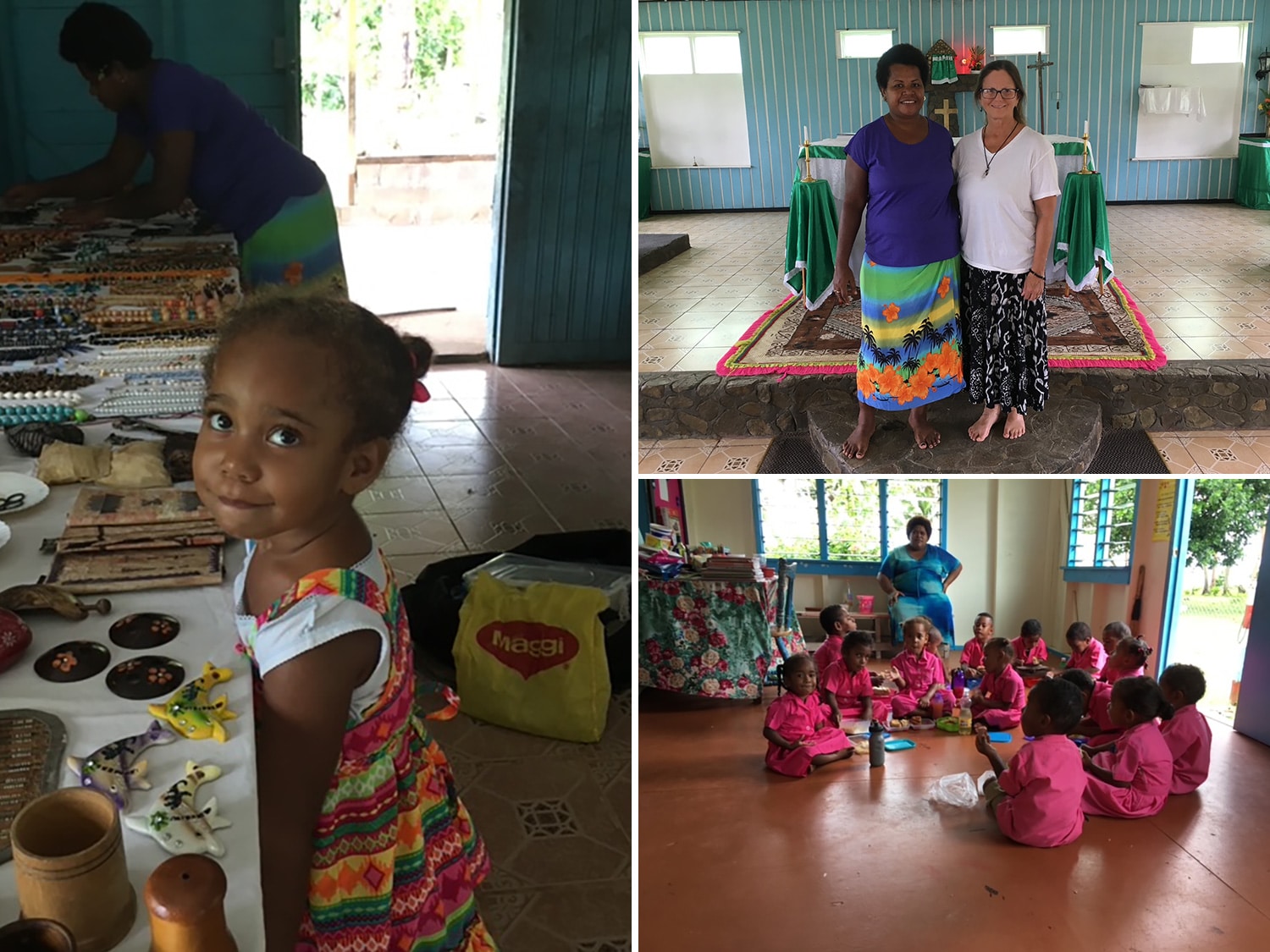
Most mornings I would take the early local bus to town along with the high school children so I could have breakfast at the Captain's Table, read a book, and then walk over to the air-conditioned Internet café, Savusavu Computers. A man from the U.K., a transplant from Brixton, asked to join me at my table for breakfast one morning. And later, an expat who had been on Vanua Levu for over 20 years struck up a conversation.
Unlike the resorts, Internet isn't widely available on the island, so the café was a gathering place of sorts. In addition to me, there were expats checking email and several people from the Peace Corps would come in once a week from whichever village was their home for the year.
As we shopped or simply waited for the bus, curious locals asked us where we came from, how we liked their island, and what it's like living in the U.S. Many of them could not believe we came from a place in California that has snow and gawked at the winter photos of home we pulled up on the iPhone. They also didn't understand why we were not staying at a resort but instead opted to live like the locals.
After a week on the island we eventually found a beach that had almost-white sand, but it still wasn't a replica of the resort photos I've been carrying with me over the decades. I realize now those magazine photos have been marketed to lure the tourist to these islands. Those beaches do exist, but they are for people who choose not to leave the safety of their high-priced all-inclusive compounds. The beach near Savusavu had loads of coral, seaweed, and yes, a few pieces of plastic. A Fijian family came down for a swim to cool down after work and a dog with a studded collar who lived across the street swam over to a pile of rocks, played with a crab, and shook himself dry before jumping back into the water.
One of the best things to happen to us while on Vanua Levu was meeting Kelly B., a free-spirited, silver-haired U.S. citizen who loves the Fijian lifestyle when she's not exploring other parts of the planet. She lives in a cottage on the plantation and had a car. We did not rent a car in Fiji, instead using local bus transportation and the occasional taxi. Meeting someone with a car in Fiji was a luxury.
One night Kelly invited us to join her at a place called the Planter's Club, an expat haven where the hobby is gin and tonic. Her friend she calls "Jay" took us out on his boat for a snorkeling excursion to a most scrumptious reef where tourists don't go unless they know someone who knows someone who knows someone with a boat. I didn't even get seasick when we stopped the boat to eat near the reef's sand spit—a blinding, white-sand, mini-island full of tiny shells and broken coral, surrounded by the bluest turquoise water I had the privilege of swimming in. It was the Fiji I had imagined. The Fiji in my pictures.
By cruising with the locals we were driven to a waterfall, somewhere in the jungle, we had all to ourselves. We also found out where the locals got their fresh spring water. Drinking water from the faucets is not something you want to do in Fiji. Before we knew about the spring, we did spend a lot of money on bottled Fiji water. And no, Fiji water isn't cheaper in Fiji.
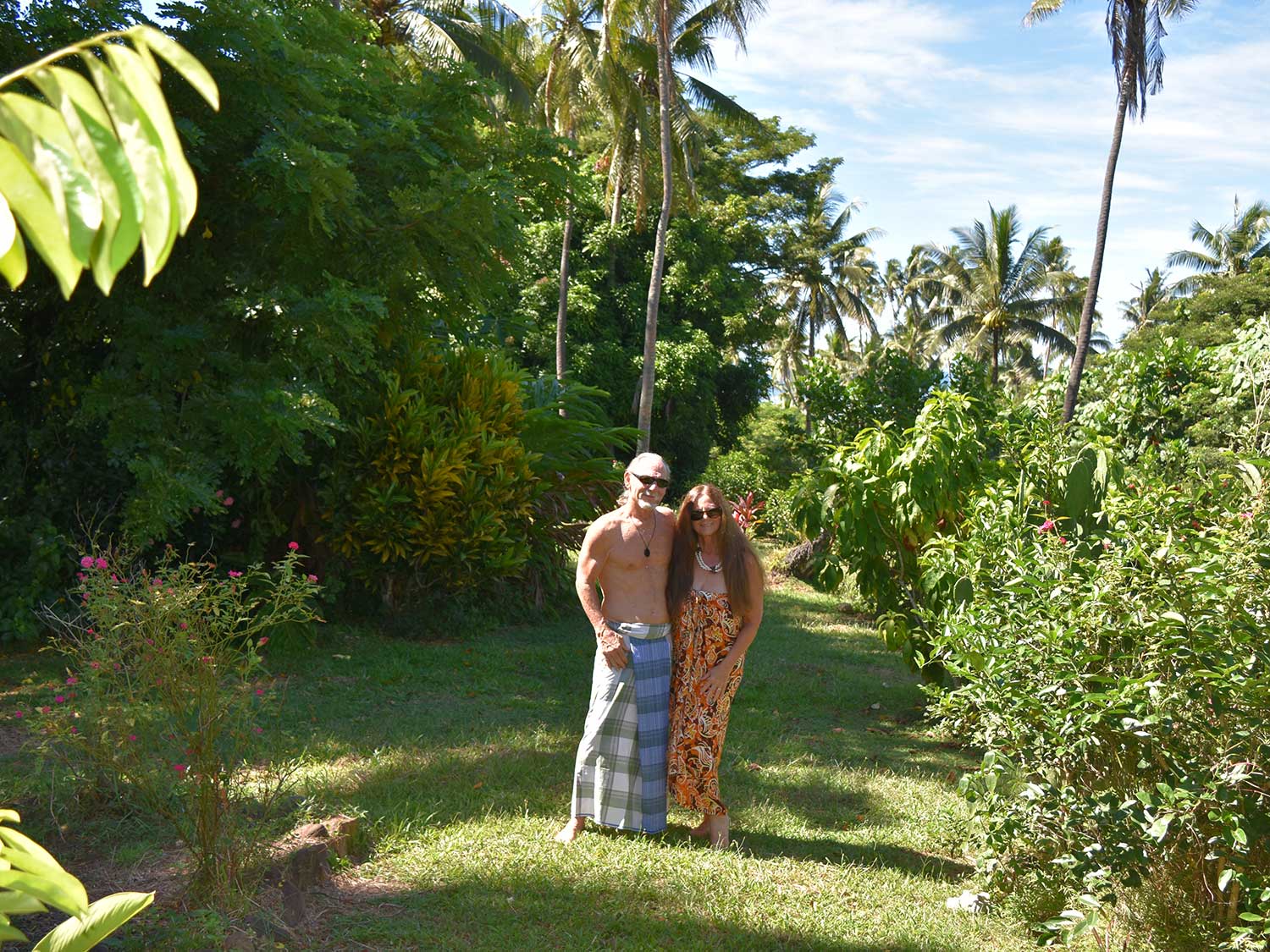
Our stay on Vanua Levu eventually came to an end. After being weighed with our luggage we flew back to Vitu Levi and stayed two more nights at the Bamboo Backpackers before heading to French Polynesia. We even splurged, taking a boat ride to the Malamala Beach Resort so we could have a tiny taste of what the resort life is like in Fiji. We are not going to say it wasn't amazingly perfect in every way. Even the bathrooms were clean. But it wasn't the Fiji we now knew.
The Fiji we experienced was not what we expected, but it is the Fiji we had become attached to and grew to love. We appreciate the islands, rife with their histories and people. Without these islanders inviting us into their homes and lives, we would have been two of many tourists sitting on a freshly groomed white sandy beach, waiting for our rum drinks to be delivered poolside, while expecting our beds to be turned down with the pillows smelling like a fresh hibiscus flower. There would be no ants to flick off our papaya and no rumbling sound coming from the local diesel buses as they chugged up the dirt road just past our Home Exchange abode on the way to pick up the villagers.
We would not have been woken up at sunrise by the local roosters, nor at six in the morning every day by the honking of a car horn, alerting the villagers to come out and get their fresh baked bread. The Fiji we fell in love with had local Indian food for five dollars US, no air-conditioning and an abundance of "bula" greetings wherever we went.
Kelly and her sister, Carla, were traveling in South America when the pandemic hit and, as of this writing, have not yet been able to get back to their home in Fiji because they are residents, not Fijian nationals. Kevin and Caroline, who own the plantation where we stayed, have not been permitted to visit their property either. I still keep in touch with Joseph Snodgrass, who keeps me updated on the goings-on in Savusavu and Fiji in general.
Champing at the bit to get back on an airplane, we will go again, with or without the miles of sparkling white sand beaches and create our own photo collage of a different kind of Fiji. One where locals laugh at the red-faced mountain woman and where my husband can eat the biggest avocados this side of the Hawaiian Islands. Unless, of course, you count the avocados grown on the island of Moorea in French Polynesia. But that's an entirely different story for another time.
